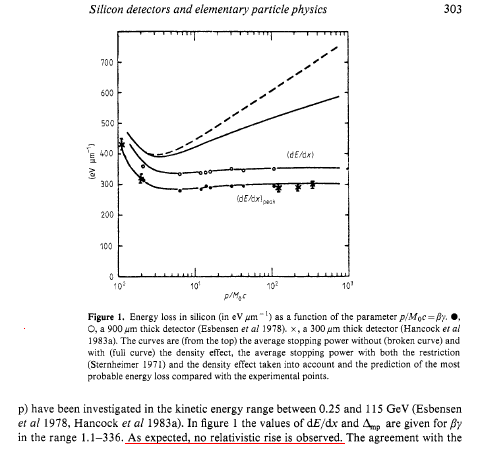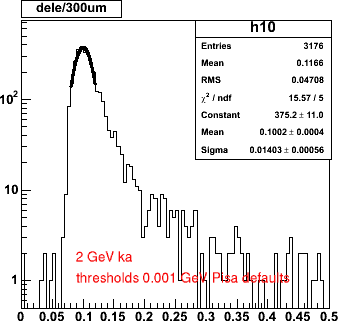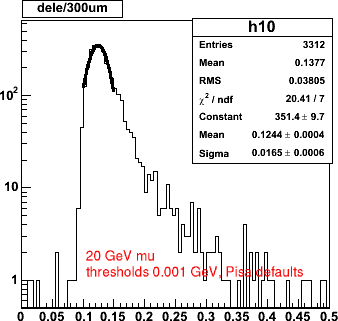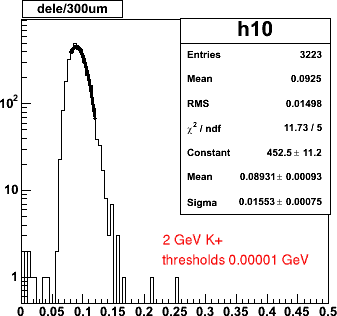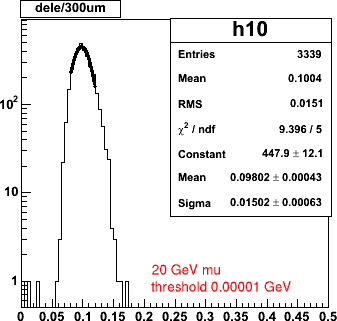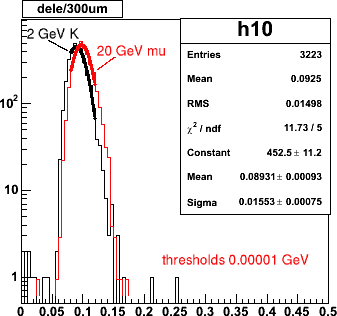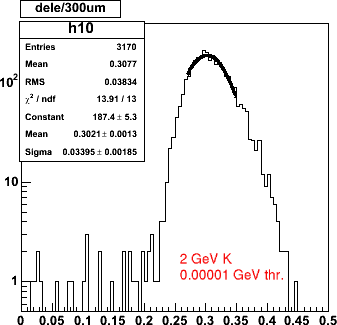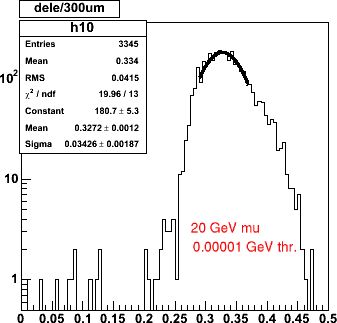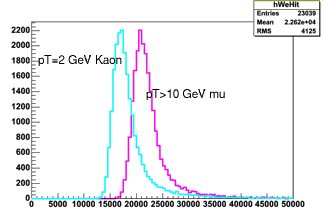
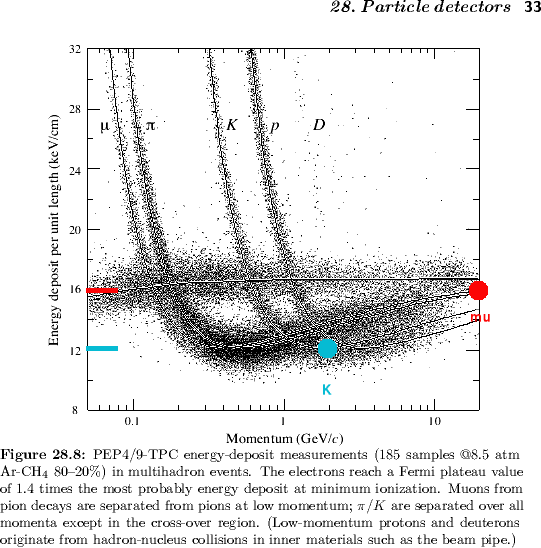
and slide 19 from this Phobos ppt presentation
Also see pg 10 of the PDG section on Passage of particles through matter
Question is: what is Geant-3 doing? Section PHYS332 of the manual appears to know about all effects: thin detectors, delta rays, fluctuations and the rest, as long as parameted LOSS is set to 1, 2, or 3.
In our pisa.kumac file, LOSS is set to 2:
LOSS 2 ! GEANT command for Landau fluctuations onHowever, the default Pisa file also turns off delta rays:
DRAY 0 ! GEANT command for Delta no ray (Landau is on)which likely means that since delta rays are not produced, the energy now deposited in the silicon includes the energy which would otherwise be carried off by the deltas - causing the relativistic rise seen in our simulations so far.
---> redo simulations with DRAY=1 (1 means produce and track them)
This will likely also raise the hit density.
